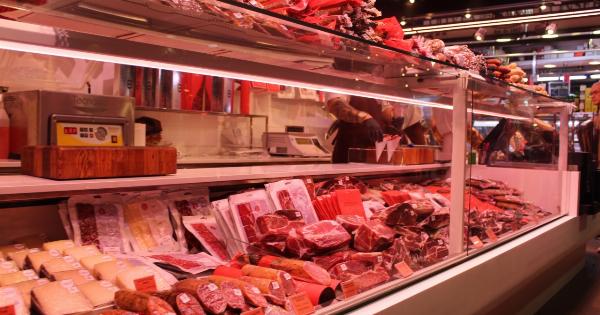Freezing is one of the most convenient ways to store food for longer periods of time. Although it’s simple, not all foods freeze the same way and a few important techniques must be followed.
In this ultimate guide to freezing foods, we’ll explain everything you need to know about freezing fruits, vegetables, meats, and prepared foods.
Why freeze food?
Freezing food is an easy and effective way to preserve it for long periods of time. It allows you to store food for weeks or even months without compromising their taste or texture.
Moreover, when you freeze food, it slows down the growth of bacteria and other microorganisms that spoil food.
What can you freeze?
You can freeze almost anything, even some foods that you might not exepct. Here is a brief list of the most common foods to be frozen:.
- Meat and poultry
- Seafood
- Fruits
- Veggies
- Baked goods
- Soups and stews
- Sauces
- Milk and dairy
- Breads and rolls
How to freeze fruits and vegetables
Freezing fruits and vegetables is pretty straightforward, but there are some tips to follow:.
- Wash and pat dry the fruits/vegetables. Peel if necessary.
- Cut into the desired size and shape. If you plan to use them for winter smoothies or soups, cut them into bite-size cubes. If you want them for pies or crisps, slice them into thin pieces.
- Blanch them in boiled water for a few minutes. This will help preserve their flavor and color. Rinse them with cold water to stop the cooking process
- Quickly pat them dry and spread them out in a single layer on a baking sheet. Freeze for 2-3 hours until solid.
- Transfer them to airtight freezer bags or containers and store in the freezer.
How to freeze meats
Freezing meats is slightly more complicated than fruits and vegetables. Here are some guidelines to follow:.
- Wrap the meat tightly with plastic or aluminum foil to avoid freezer burn. Seal it in a freezer bag, squeezing out as much air as possible.
- If you plan to freeze it for more than a month, double wrap it to prevent freezer burn and moisture loss.
- Label the package with the name of the meat, the date it was frozen, and how long it can be stored. Most meats can be safely stored in the freezer for up to 6 months.
- Raw meat should be stored separately from cooked meat to avoid cross-contamination.
- Defrost frozen meat in the refrigerator, rather than leaving it at room temperature, to prevent bacterial growth
How to freeze prepared foods
Freezing prepared foods is a great way to have quick meals on hand when you don’t have time to cook. However, not all dishes are suited for freezing. Here are some tips:.
- Let the food cool down to room temperature before freezing, to avoid moisture and bacteria growth.
- If you’re planning to freeze soup or stew, and want to preserve the soup’s color, freeze it without the starchy ingredients like pasta or rice. Add them after defrosting and reheating.
- Do not freeze foods that have already been frozen before. Refreezing can cause bacteria growth and spoilage.
- Make sure to label the package with the name of the food, the date it was frozen and how long it can be stored. Prepared foods can usually be stored in the freezer from 2-6 months.
How to defrost frozen foods
Defrosting frozen foods is crucial to avoid bacterial growth and spoilage. Here are some ways to defrost frozen foods safely:.
- In the refrigerator: This is the safest way to defrost frozen foods. Place the food on a plate or in a container and leave it in the fridge for 24 hours or until it’s completely thawed.
- In cold water: For faster defrosting, place the frozen food in a leak-proof bag and put it in a bowl of cold water. Change the water every half hour until the food is fully thawed. This method is suitable for smaller items like fruits, vegetables, and meat fillets
- In the microwave: This is the fastest method but it’s also the most risky. Microwave defrosting can cause uneven defrosting and cook some parts of the food, which is particularly a problem for meat.
How to store frozen foods
Storing frozen foods properly will keep them fresh and safe to eat. Here are some tips to keep in mind:.
- Keep the freezer at 0°F to -10°F (-18°C to -23°C). Any higher, and the food may not freeze properly, which can cause bacteria growth.
- Use airtight containers or freezer bags to avoid freezer burn. Make sure to squeeze out any air before closing.
- Label each bag/container with the name and date of the food to avoid confusion.
- Organize the freezer so that the oldest items are at the front and the newest items are at the back. This will help you to use up any food before it gets too old.
In Conclusion
Freezing food is a great way to preserve food for an extended time. By following these tips on how to freeze, store, and defrost foods, you can enjoy fresh-tasting food all year round.
Try these techniques and experiment with different foods to find out which ones freeze best of all.






























